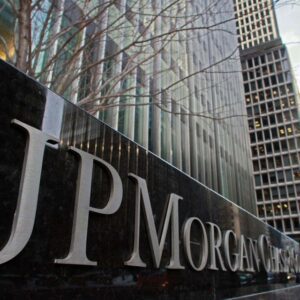T-Bills vs. Treasury Bonds: Which Should You Pick When the Yield Curve Inverts?

The <0 column indicates an investment made when the yield curve inverts. There seems to be a consistent relationship between yield spreads and subsequent one-year returns. When cash has a higher yield than longer-term bonds, the average one-year return is 67 basis points (0.67%) higher for cash.
The term premium reappears during periods where bond yields exceed cash yields, and the return difference rises with the yield spread. In environments when bill yields exceed bond yields, the future return on bills tends to be positive 58% of the time. In other words, when bill yields are higher than bond yields, bills tend to outperform bonds.
Not only is the return higher, but the risk of investing in bills is lower. If we assume the bills have a one-year term and are held to maturity, there is no price risk.
In contrast, a bond portfolio purchased through an ETF or mutual fund would fluctuate in value depending on future changes in yields. This effect was especially pronounced in 2022 when many bond funds had returns in the neighborhood of -15% due to the rise in yields.
A reason to avoid buying short-term bills when bill yields exceed bonds yields is that that bond yields will subsequently decline, resulting in reinvestment risk of the one-year bill investment. An investor who locked in a 5% one-year bill, only to see yields fall over the next 12 months to 3% would have missed out on the opportunity to lock in a higher long-term rate.
To see what happens in the future in various environments, we compare the future yield on bonds (Panel A) and bills (Panel B) three years later based on the current/initial bond minus bill environment.
Future Changes in Yields
Panel A: Change in Bond Yields + 3 Years Panel B: Change in Bill Yields +3 Years
Bond Yld minus Bill Yld (%)
Bond Yld minus Bill Yld (%)
<0
0-1
1-2
>=2
Avg
<0
0-1
1-2
>=2
Avg
AUS
-0.27
0.40
-0.07
-0.78
-0.18
AUS
-0.99
0.10
0.30
0.94
0.09
BEL
0.03
-0.40
0.22
-0.02
-0.04
BEL
-0.72
-0.76
0.94
0.30
-0.06
CHE
-0.06
0.12
-0.53
-0.12
-0.15
CHE
-0.65
-0.17
-0.17
1.14
0.04
DEU
-0.17
-0.13
-0.10
-0.16
-0.14
DEU
-2.10
-0.26
0.14
0.94
-0.32
DNK
0.07
0.03
-0.70
-0.47
-0.27
DNK
-0.46
0.21
-0.22
0.75
0.07
ESP
0.67
0.25
-0.20
-1.40
-0.17
ESP
-0.19
0.11
-0.05
-0.25
-0.10
FIN
0.44
0.11
-0.37
-0.95
-0.19
FIN
-0.65
-0.24
-0.25
0.31
-0.21
FRA
-0.07
-0.27
0.03
-0.18
-0.12
FRA
-1.94
-0.83
0.30
0.75
-0.43
GBR
-0.12
0.01
0.05
-0.11
-0.04
GBR
-1.56
0.11
0.79
0.71
0.01
ITA
0.57
-0.49
0.02
-0.32
-0.05
ITA
-0.77
-0.72
0.27
0.70
-0.13
JPN
-0.32
0.16
-0.06
-0.47
-0.17
JPN
-1.72
0.12
0.24
0.82
-0.13
NLD
-0.17
-0.04
0.02
-0.40
-0.15
NLD
-1.99
-0.29
0.47
0.86
-0.24
NOR
-0.04
-0.20
-0.28
0.28
-0.06
NOR
-0.63
-0.15
-0.29
0.67
-0.10
PRT
0.83
0.08
-0.17
-1.34
-0.15
PRT
-1.00
-0.52
0.22
0.95
-0.09
SWE
0.13
0.11
-0.20
-1.07
-0.26
SWE
-0.21
0.05
-0.02
-0.45
-0.16
USA
-0.13
0.04
0.23
-0.62
-0.12
USA
-0.78
-0.07
0.76
0.91
0.21
Avg
0.09
-0.01
-0.13
-0.51
Avg
-1.02
-0.21
0.22
0.63
Source: Authors’ Calculations, JST Macrohistory Database, Data as of Dec. 31, 2020
When an investor buys a bill during an inverted yield curve environment, over the next three years there is no indication that bond yields end up falling as would have been predicted according to the expectation hypothesis. On average, an investor doesn’t lose out on an opportunity to lock in attractive long-term bond rates when they take advantage of high short-term bill yields.
While the future yields on bonds appears to be relatively random, future bill yields tend to decline when bill yields exceed bonds and vice versa. In other words, the shape of the yield curve tends to normalize, where bond yields exceed bill yields, but the overall level of the curve is relatively random.
This suggests an inverted yield curve is relatively temporary environment. Investors aren’t punished for shifting from long-term bonds to short-term bills during periods when markets are providing a bonus to reduce duration.
Implications for Today’s Environment
While Treasury bill returns are predictable with little risk, longer-term bond returns are unpredictable and volatile.
An investor can lock in today’s high yields on short-term bond investments with no tradeoff in terms of expected long-term bond returns, and can achieve significantly lower short-run volatility from their bond portfolio.
Therefore, investors looking for a low-risk return today should potentially consider allocating to shorter duration fixed income investments, but need to be ready to pivot back into longer duration bonds when the yield curve normalizes.
David Blanchett, Ph.D., CFA, CFP, is managing director and head of retirement research for PGIM DC Solutions, the global investment management business of Prudential Financial Inc. Previously, he worked at Morningstar Investment Management LLC and Unified Trust Co.
Michael Finke is a professor and Frank M. Engle Chair of Economic Security at the American College of Financial Services and leads the Wealth Management Certified Professional designation program.
(Image of David Blanchett, left, and Michael Finke)





